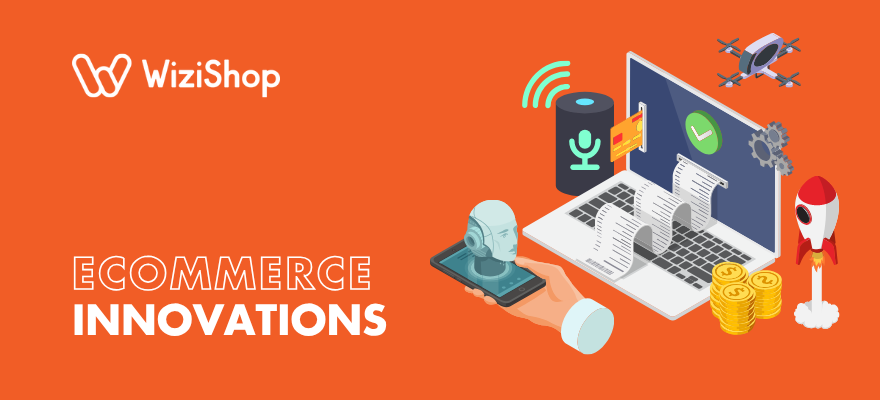When it comes to ecommerce, there’s one thing you definitely count on: change is always just around the corner!
Regardless of what you sell, you’ll likely encounter many twists and turns on your journey as an ecommerce entrepreneur.
To give your venture the greatest chance of success, it’s not sufficient to simply launch your ecommerce website and hope for the best. It’s important to be able to adapt to shifts and changes in the market when (not if) they arrive.
In this article, we’ll take a look at some of the top ecommerce innovations that are transforming the exciting world of online sales!
Table of contents
- 1. Personalization driven by AI
- 2. One-click checkouts
- 3. Generative AI for content creation
- 4. Sustainable ecommerce
- 5. AR- and VR-boosted shopping experiences
- 6. Blockchain technology
- 7. Live shopping
- 8. Voice commerce
- 9. Mobile selling based on location
- 10. Increasingly faster delivery
- 11. Chatbots for customer service
- 12. Social commerce
- The future of ecommerce: A focus on user experience
1. Personalization driven by AI
With so many online stores available, ecommerce entrepreneurs must constantly look for new ways to help their businesses stand out from the competition.
Many e-tailers, especially the owners of small businesses, are turning to artificial intelligence (AI) to give buyers personalized shopping experiences and differentiate themselves.
Using advanced AI technologies like machine learning algorithms, natural language processing, deep learning, etc., businesses are able to provide hyper-personalized product recommendations, pricing, and customer journeys—customized in real-time based on browsing history, purchase behavior, and preferences.

Personalized product recommendations on the Zooplus website
Employing AI also allows brands to create ads that are better targeted to their audience, e.g., showing goods in line with users’ preferences and past orders.
This is appealing not just from the consumer’s perspective, as we all know how annoying it is to see ads for products that are of no interest to us, but also from the business’s point of view.
Targeted ads using personalization have a much greater chance of converting viewers into buyers, making these ads well worth the money spent to create them.
Besides helping to increase an online store’s conversion rate, AI can also assist with turning one-time buyers into loyal customers.
Adding a personal touch to customer support, creating tailored blog articles and videos, and placing personalized CTAs across your site and social networks are just a few of the AI-powered tactics you can utilize to expand your reach, drive traffic to your online store, and grow your business.
2. One-click checkouts
An online store’s checkout can have a significant impact on whether their visitors decide to finalize a purchase or not.
An easy, seamless experience is what ecommerce customers want, while a complicated experience consisting of several pages to complete the purchase can be frustrating and cause users to quickly exit the site and head to a competitor’s to buy the product.
With this in mind, many e-merchants are adopting a one-click (or single-click) checkout on their ecommerce sites.
As the name suggests, a one-click checkout makes it possible for shoppers to fill in the necessary checkout information and buy an item without needing to create an account or complete extensive forms.
While the entire checkout process will still likely take more than just a single click from start to finish, the idea is to make it as simple as possible!
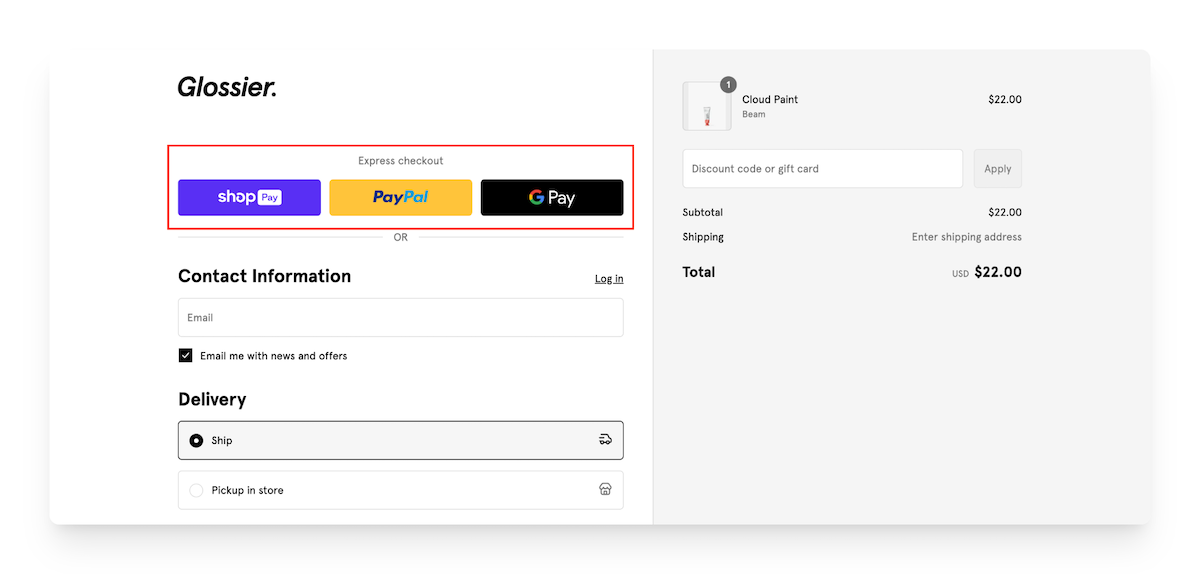
One-click express checkout on the Glossier website
Although this innovation isn’t new, it’s certainly becoming more prevalent in e-retail today and is likely to continue to be an important strategy for reducing cart abandonment.
Convenience is huge with web shoppers, particularly those using mobile devices, and using a one-click checkout is a great way to improve the overall ecommerce customer experience, as it encourages new visitors to buy and makes it easier for existing customers to return and quickly make repeat transactions.
3. Generative AI for content creation
Generative AI refers to artificial intelligence models that can create new content—such as text, images, videos, audio, and other forms of data—by learning patterns from existing data.
Its roots trace back to early machine learning and neural networks, but it gained traction with models like GANs (2014) and later with large language models like GPT (from 2018 onward).
Rapid technology developments have caused generative AI to skyrocket in popularity in recent years. In fact, Statista reports that the global generative AI market size is expected to amount to approximately $66.9 billion in 2025 and reach about $442.1 billion by 2031.
For online sellers, generative AI streamlines content creation by automatically generating product descriptions, ad copy, blog posts, and even product images. This reduces time, cost, and reliance on human creatives, while maintaining consistent branding.
Sellers can quickly localize content for different markets, update listings at scale, or test various ad versions, all while improving engagement and SEO. Today, it’s a key driver of speed, personalization, and efficiency in ecommerce marketing.
The all-in-one ecommerce solution WiziShop is proud to offer e-merchants a variety of powerful AI tools. These exciting features allow you to generate a variety of text content in a flash: from product descriptions and translations, to TikTok video scripts, blog posts, and more. Sign up with WiziShop today to create your ecommerce site on the platform and harness the power of AI for your business!
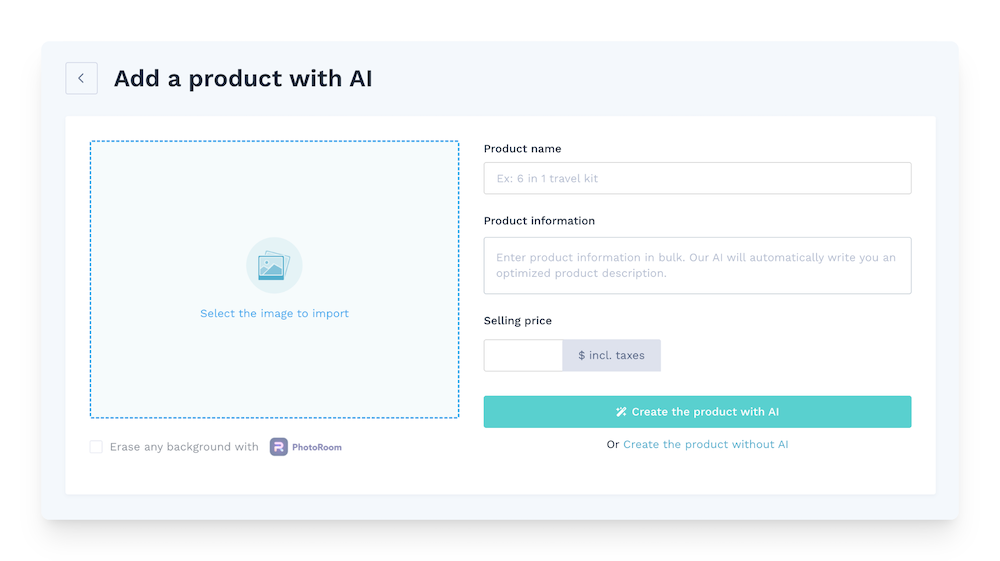
Add a product to your online store in just a few clicks with WiziShop’s AI
Try WiziShop free for 7 days
THE EASIEST NO-CODE ECOMMERCE SOLUTION✅ No credit card required
✅ Access to all features
✅ No commitment
4. Sustainable ecommerce
Ecommerce offers a lot in terms of convenience. People buying things on the internet can make a purchase at any hour of the day from the comfort of their home.
Furthermore, they have many options from which to choose when it comes to where they buy items—they can even place orders from stores that are halfway across the world from them!
However, this added convenience comes at a price. Excess packaging, increased carbon emissions from delivery carriers, unethical sourcing practices, order returns, etc. are all contributing to environmental issues that cannot be ignored.
Today’s online shoppers are becoming increasingly concerned about sustainability. They want the brands they purchase from to be aligned with their values and beliefs involving the protection of Mother Earth and to follow eco-friendly business practices.
In a 2023 survey by McKinsey & Company, for almost half (45%) of respondents, sustainability was a baseline expectation for them when it comes to brands or products.
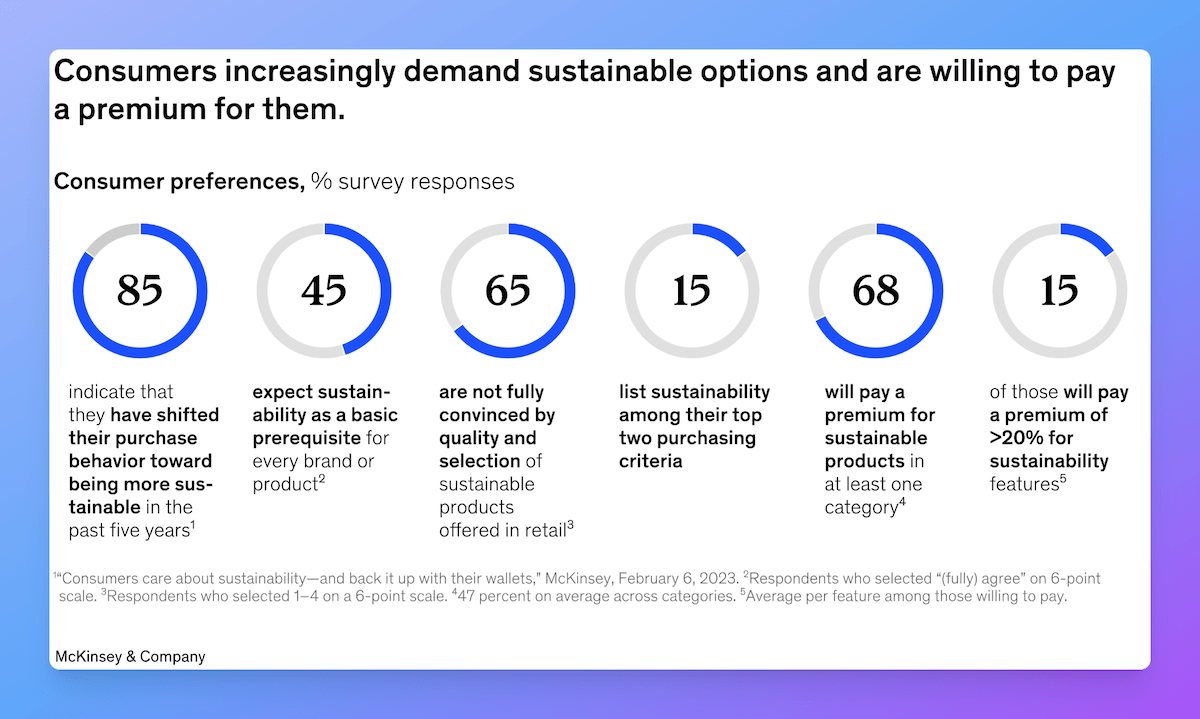
Source: McKinsey & Company
So what can e-merchants do to step up to the plate and reduce ecommerce’s negative impact on the environment?
Product packaging is an excellent place to start.
According to a January 2021 survey by Statista involving consumers from the US and the UK, 50% of respondents would like brands to not use as much packaging for goods. The study also found that approximately the same percentage of shoppers want brands to use recycled materials for their packaging.
That being said, packaging definitely isn’t the only place to focus your environmentally responsible efforts. Additional areas to work on concerning environmental sustainability include prioritizing sustainable delivery options, reducing order returns, and selling sustainable goods.
For sustainable ecommerce inspiration, look to cruelty-free beauty brand Lush!
To begin, the company features a recycling program that allows customers to get a free mask or discount off a future purchase when they return their used Lush containers to a Lush store to be recycled.

In addition, the company is dedicated to constantly improving sustainability in both their products and business practices.
Source: Lush
5. AR- and VR-boosted shopping experiences
Although online shopping offers a number of advantages over traditional shopping in brick-and-mortar stores, one drawback is that buyers aren’t able to see the items they wish to purchase in person.
To help people better imagine having an item in their hands or using it in their environment, more and more companies are employing technologies involving augmented reality (AR) and virtual reality (VR).
While AR has been around for a while, it’s started to be used more often by online retailers to supply site visitors with an even more enjoyable shopping experience as a form of digital commerce that assists in contributing to the customer journey.
For example, Sephora’s Virtual Artist feature in the brand’s mobile app allows users to try on makeup virtually to more easily picture how it would look in real life.
Source: MultiVu
Another company taking full advantage of AR technology is Wayfair with its View in Room app.
With this handy tool, users can place virtual 3D versions of furniture they’re considering buying in their living spaces, which can aid them in determining if a piece would fit in a certain room or how well it would pair with other furniture in the space.

Source: Wayfair
6. Blockchain technology
Blockchain works as a kind of decentralized digital database, recording transitions, which are encrypted and distributed over numerous computer networks.
Often associated with cryptocurrencies, blockchain technology can also be used in ecommerce to improve supply chain management and increase transparency for customers.
As buyers are starting to more frequently question brands on everything from product origins to business practices, the use of blockchain technology is becoming more popular as a way to better inform shoppers and alleviate their concerns.
It, for instance, allows customers to view important information about goods, including the origins of goods and supplier details.
Blockchain also allows for faster and cheaper payments and can assist with reducing payment fraud, as it can be used to create a payment system with more security.
Furthermore, it helps prove product authenticity, especially in luxury, electronics, or pharmaceuticals. Brands can create digital certificates or tokens linked to individual products, giving buyers proof of origin and ownership.
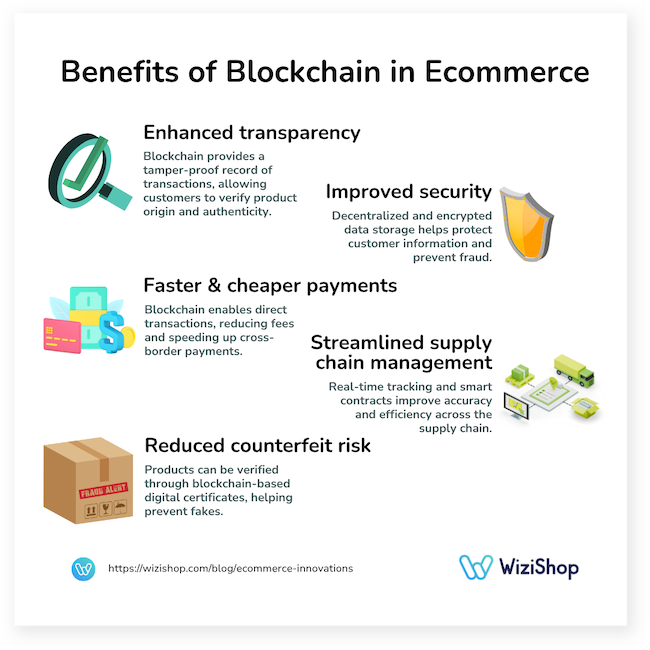
7. Live shopping
Similar to what many of us remember seeing on shopping shows on TV back in the day, live shopping makes it possible for viewers to purchase from the comfort of home while enjoying live video entertainment.
One of the top ecommerce trends of today, buying via livestream is especially popular on platforms like Facebook and Instagram, though an increasing number of platforms are embracing this activity and are starting to offer their own live shopping features.
In addition, there are also numerous platforms available designed specifically for live streaming, such as GoLive and Bambuser.
During this kind of event, potential customers watch as the host, perhaps the business owner or an influencer collaborating with the brand, will talk about and demonstrate an item in real time.
Source: Hobbii
It’s also usually possible for viewers to interact with the host via a chat function and reaction buttons, features that are great for boosting audience engagement and increasing purchases during the event.
To give your own shoppable livestream the most chance of success, keep in mind that entertaining your audience is an essential part of the event. The more engaging the event, the longer that people are going to watch.
Even if this is the first experience members of your audience are having with your product, watching others buy it can remove any doubts they may have and convince them that they have to have your product for themselves!
8. Voice commerce
As consumer demand for “smart” tech grows, it’s not surprising that virtual voice assistants like Amazon Alexa and Google Home are becoming more prevalent in homes.
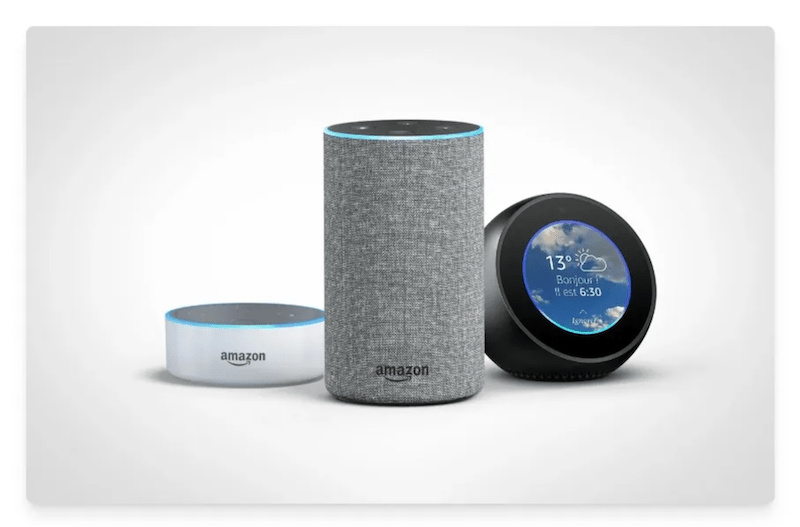
Smart devices to be used with Amazon Alexa
According to recent research from Statista, there were around 142 million people in the United States using voice assistants in 2022. This figure is expected to grow to 157.1 million users in 2026.
Consumers are now employing devices like voice-activated smart speakers, which incorporate the use of virtual assistants, to not just ask about the weather and play music but also to get product recommendations and even buy goods on the web.
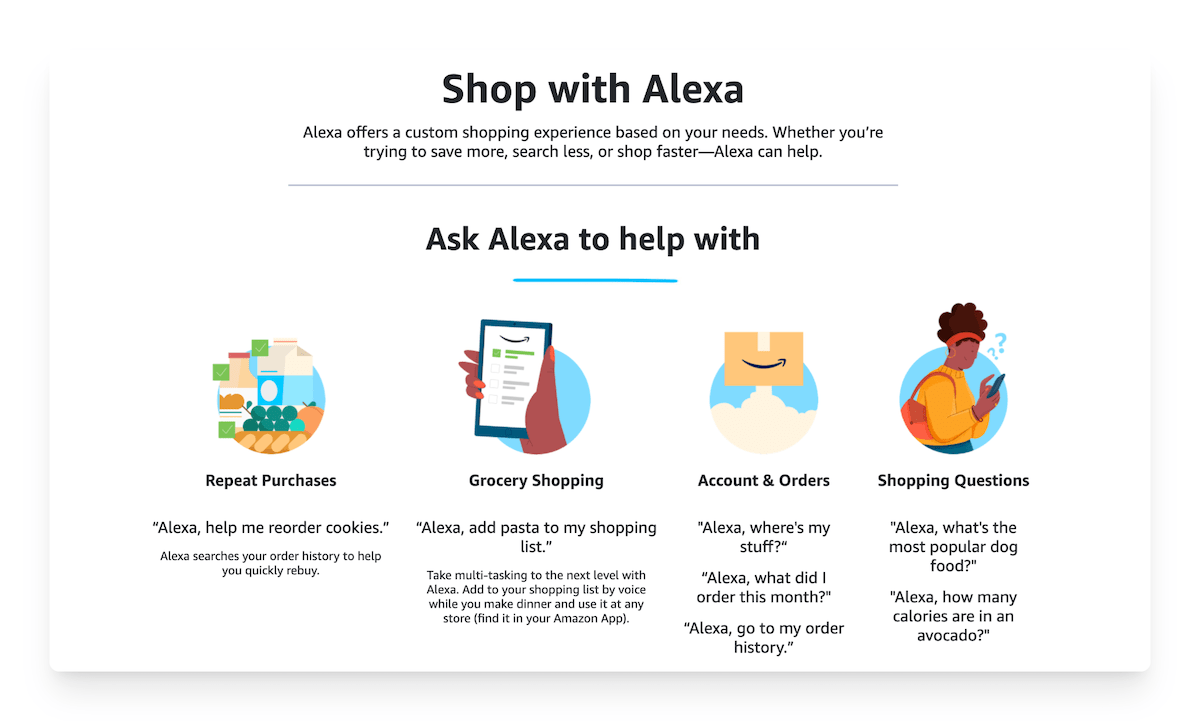
Voice shopping with Amazon Alexa
With this ecommerce innovation, people are able to complete transactions anywhere, be it at home, at the office, or in the car, just by using their voice!
The buyer’s journey in voice commerce often begins by the consumer identifying a problem and asking a virtual assistant to propose a product that can solve the issue.
Next, the buyer may ask their voice-activated device to research different goods on the market and provide specific details to aid them in their purchasing decision.
After the buyer orders the item via the device, the device may offer shipping notifications to keep the buyer updated until the order is delivered.
It’s interesting to note that similar to how SEO works on search engines like Google, e-retailers can work on optimizing the information they supply on their pages to improve the chances of their offerings being recommended by virtual assistants when buyers are engaging in voice shopping.
This entails considering people’s speech patterns and what they’re likely to ask out loud rather than what they would type in a search bar.
9. Mobile selling based on location
People are more on the go than ever before. With their smartphones in hand, they can research and purchase products in a matter of minutes if not seconds, wherever they are.
It only makes sense then that ecommerce businesses look for ways to use people’s growing mobile usage to their advantage.
Geo-targeting, which involves identifying a user’s location and providing content based on that location, is already frequently used by retailers with physical stores.
For example, if a consumer’s close to a store, the company’s mobile app may deliver push notifications to the user’s phone to inform them of special in-store promotions occurring, encouraging them to visit that particular location.
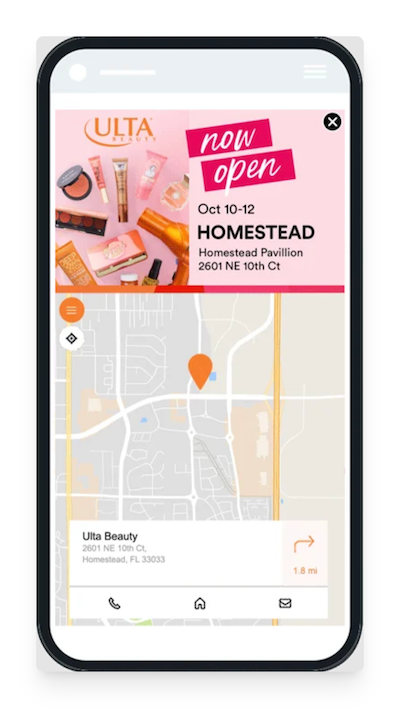
Ulta Beauty x GroundTruth collaboration using location data to drive traffic to new stores
However, geo-targeting is also employed by ecommerce sites for added personalization to help boost purchasing on mobile devices.
Say that a consumer is visiting a brick-and-mortar pet supply store. The shopper may get a notification on their phone letting them know that they can purchase a specific brand of pet food at a discounted price on the internet.
Another way this can work is by collaborating with physical stores that sell related goods.
Say that you have an ecommerce website that sells online courses on dog training, for instance. You might set up a partnership with brick-and-mortar pet supply stores.
Whenever a shopper visits these stores and makes a purchase or signs up for their loyalty program, you could send the shopper a special offer for your dog-training courses.
10. Increasingly faster delivery
For many buyers, delivery speed is a very important factor when it comes to choosing which online stores to purchase from.
No longer content to wait weeks to receive an order, shoppers often expect to at least have the option to select express shipping at checkout, allowing them to have their packages delivered within a day or two.
However, with the arrival of food delivery services such as Deliveroo and UberEats, people have become accustomed to receiving their restaurant or grocery orders in an even speedier fashion, often in less than one hour.
To meet ever-growing expectations for quick commerce, e-retailer teams have started experimenting with different technologies and tactics to deliver products faster than ever before.
For example, in June 2022, Amazon announced that the company was set to commence trials of a new drone delivery option, Prime Air, to deliver customers’ orders with drones within an hour.
Source: CNBC Television
Walmart has a similar service in place, allowing people to receive their purchases in less than 30 minutes via drone for orders weighing 5 lb or less.
While this type of technology is currently rather limited, we can expect it to become more developed and more prevalent in the future for ecommerce.
Another trend resulting from the ecommerce innovation of quick commerce is the option to place an order online and pick it up at a brick-and-mortar store, commonly referred to as the click-and-collect service.
During checkout, the site will inform visitors of the physical stores closest to their location. Once their purchases are finalized, they’ll receive an email when their orders are ready to be picked up, often within a few hours or even minutes!
11. Chatbots for customer service
When shopping on the web, a consumer may find that they have a question that can’t be answered after browsing the site.
Even with email and phone number contact details for the company readily available, the visitor may be in a hurry and decide that inquiring via these methods is too much of a hassle and exit the site.
This is where the use of chatbots comes in handy!
Software that mimics human interaction, either in a written or spoken format, chatbots can take shape as website bots, apps, social media chatbots, and voice assistants.
They’re used to provide site visitors with incredibly speedy responses and accurate information 24/7.
Although the presence of chatbots on ecommerce sites is nothing new, chatbot technology has seriously advanced since it originally started appearing to aid online shoppers.
Modern chatbots are excellent tools for automating customer support in ecommerce, offering visitors personalized shopping experiences to guide them in their buying decisions, whether by answering questions or recommending products to suit their needs.
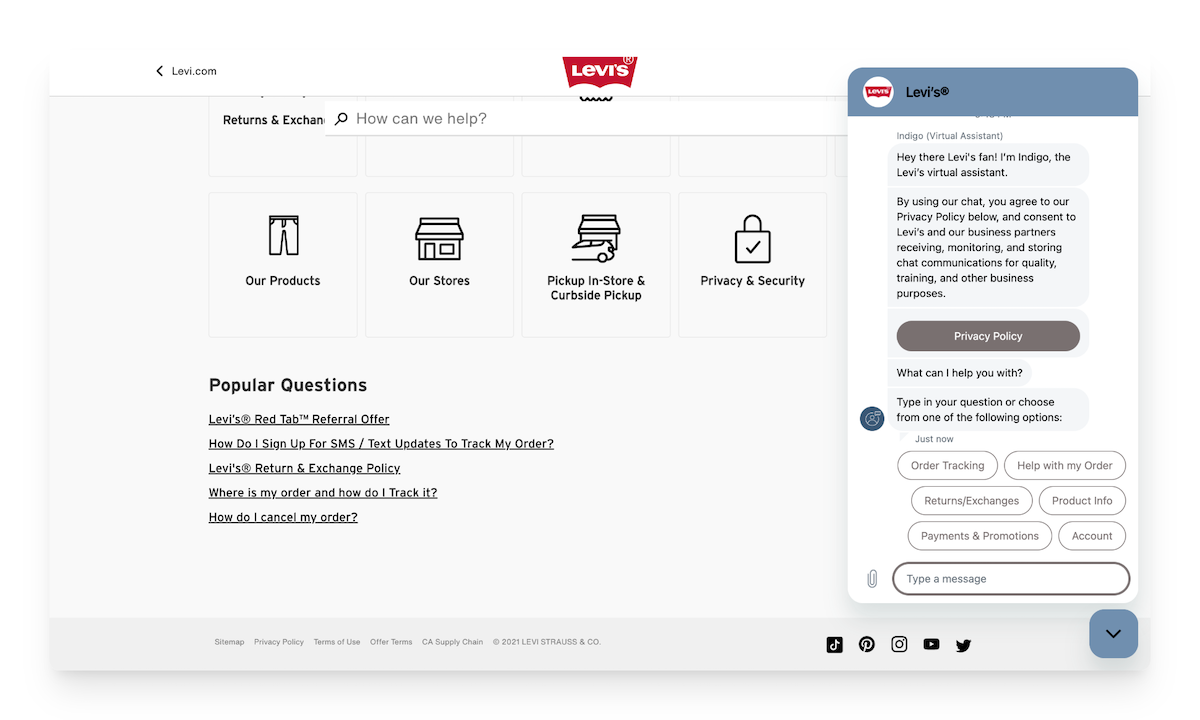
Indigo, the virtual assistant chatbot on the Levi’s website
12. Social commerce
Social commerce involves the purchasing and selling of products and services using social platforms.
With social media usage being so prevalent with today’s buyers, it’s not shocking that a growing number of e-merchants are turning to social networks to build awareness, increase site traffic, and boost sales.
Part of the importance of ecommerce is that it makes it possible to have a greater number of customers than you might with a physical storefront alone, and social commerce can do wonders for expanding your reach even further.
While this form of commerce has been possible for several years now, networks are continuously developing new features to assist brands in selling: Shoppable posts, product pages, live shopping, “Buy” buttons, and more!

Example of social commerce with ASOS on Instagram
This kind of commerce is attractive for consumers because they don’t need to leave the platform to be able to complete a purchase, but it provides retailers with a plethora of advantages as well.
It allows them to target people according to their social media preferences, engage with current and potential customers alike, and take advantage of helpful sales-monitoring tools.
Furthermore, the power of this form of commerce doesn’t seem to be slowing down anytime soon. A recent Accenture study determined that social commerce sales are expected to increase three times faster than traditional ecommerce, reaching estimated sales of $1.2 trillion worldwide in 2025.
The future of ecommerce: A focus on user experience
In the rapidly evolving world of ecommerce, staying ahead of the curve is imperative for success.
Today’s top ecommerce innovations have ushered in a new era of convenience and efficiency for both businesses and consumers. From the integration of augmented reality for immersive shopping experiences to the rise of chatbots and AI-driven personalization, the landscape is continually reshaped.
As we embrace these new developments, it’s clear that ecommerce will continue to evolve, promising a future where shopping is not just a transaction but an experience tailored to individual preferences and needs, focusing on creating personalized shopping experiences and improving the overall user experience.
By adapting and adopting these innovations for your business, you can boost your chances of entrepreneurial success in the online retail space!


